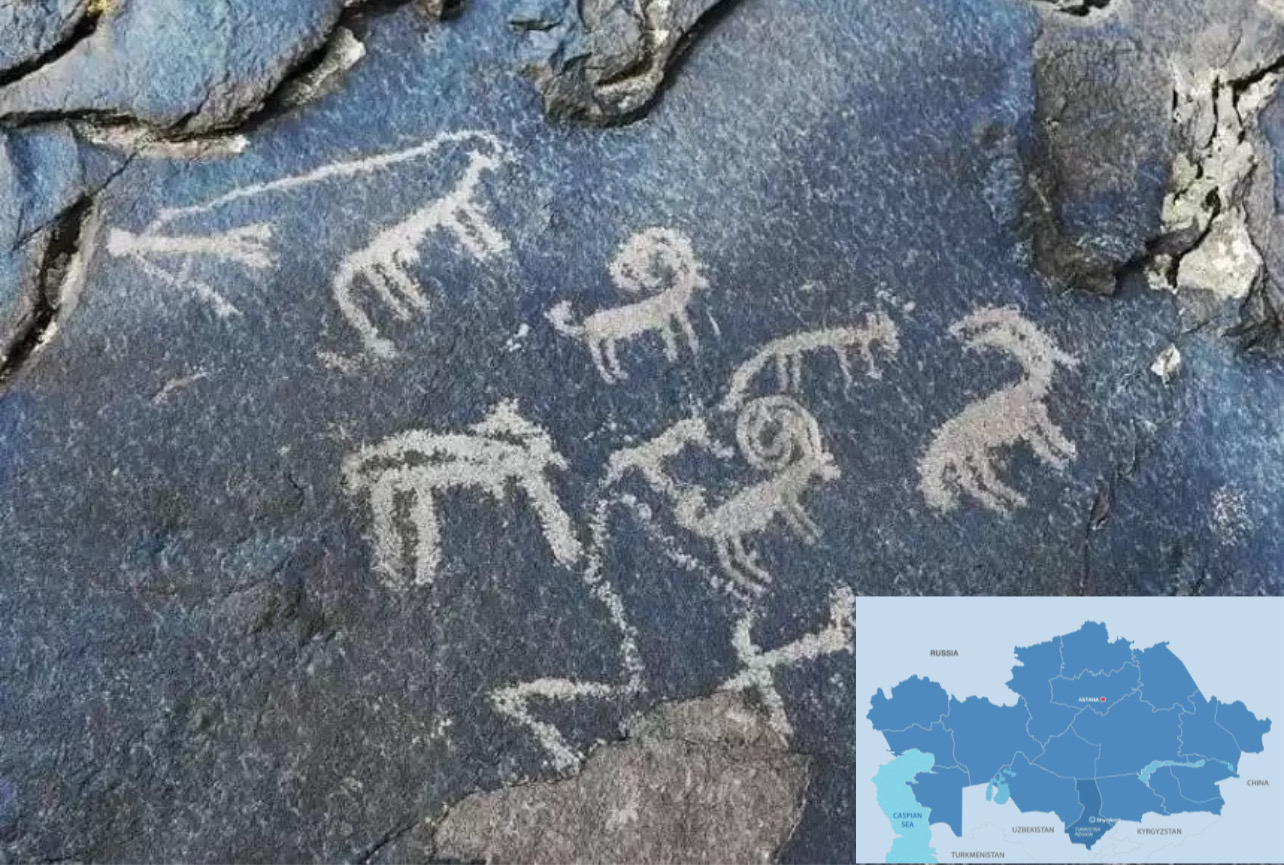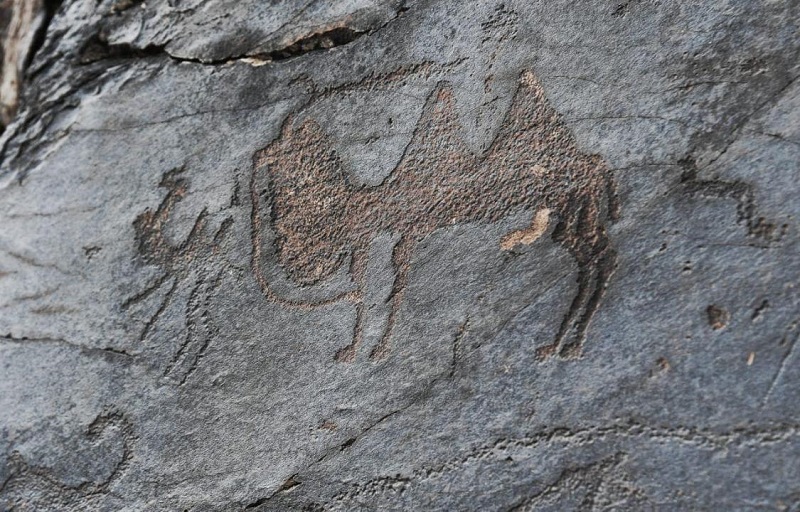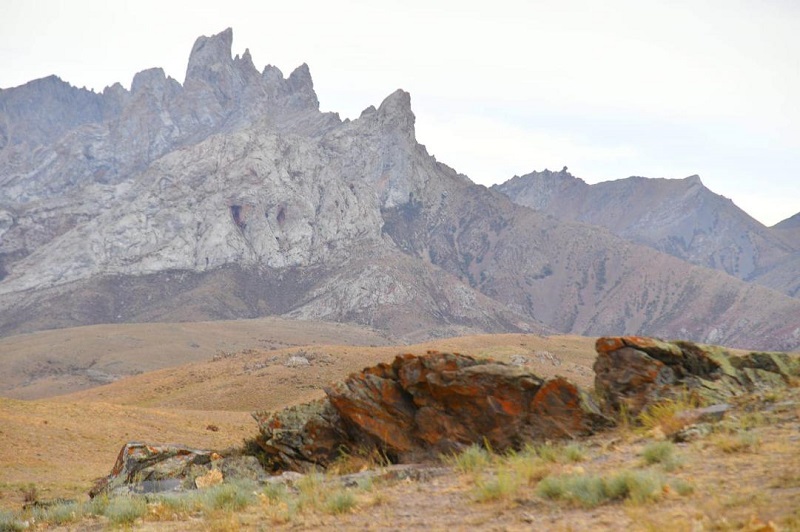ASTANA — Significant progress has been made in Turkistan Region toward attaining United Nations Educational, Scientific and Cultural Organization (UNESCO) recognition for the Arpaozen petroglyphs. This ancient cultural heritage is an invaluable asset, according to a press release from the regional governor’s office.

The Arpaozen site comprises three main groups of petroglyphs: those from the late Bronze Age, the Saxon period, and engravings from the 18th and 19th centuries. Photo credit: press service of the regional governor’s office. Click to see the map in full size. The map is designed by The Astana Ti mes.
Darhan Satybaldy, the region’s akim (governor), recently visited the Sozak district to assess the condition of these petroglyphs, which are located in the foothills of the Karatau mountains. During his tour, he consulted with experts in petroglyph preservation and tourism development.
“Karatau boasts a unique history and a rich ancient legacy, with the Arpaozen petroglyphs holding a distinctive place within it. This astonishing historical heritage is not widely known. Preservation of this open-air relic, which spans millennia, is imperative. For this, we rely on the expertise of historians and researchers,” said Satybaldy.
Researchers have dated the petroglyphs in the Kelinshektau ridge area of Sozak to between 4,000 and 5,000 years ago. The Arpaozen site comprises three main groups of petroglyphs: those from the late Bronze Age, the Saxon period, and engravings from the 18th and 19th centuries. The site features more than 3,500 drawings, including depictions of humans, animals like bulls and camels, battle chariots, the sun, and other elements.

In the late 20th century, researchers ascribed significant value to the discovery of approximately 50 images of military chariots and cargo carts. Photo credit: press service of the regional governor’s office.
In the late 20th century, researchers ascribed significant value to the discovery of approximately 50 images of military chariots and cargo carts. These illustrations suggest that the area served as a battleground in ancient times.
Within the corpus of petroglyphs in the Karatau mountains, these specific images hold particular value. Similar images can be found in the Zhetisu Region, especially in the Tanbaly and Yeshkiolmes areas, where they exhibit a consistent style and rare portrayals of draft animals such as horses and camels.
Bauyrzhan Baytanayev, a distinguished scholar from the National Academy of Sciences of Kazakhstan, stressed the need to safeguard and promote the Arpaozen petroglyphs.

Photo credit: press service of the regional governor’s office.
“Our goal is to designate the area for the preservation of this historical heritage. Securing a place for these iconic stones on UNESCO’s list of cultural and historical heritage will attract international tourists, stimulate the growth of a tourism cluster and create jobs. The Arpaozen petroglyphs hold immense potential. Therefore, we must preserve these stones from vandalism and graffiti,” noted the scholar.
To ensure the petroglyphs’ protection, all have been cataloged and assigned identification passports. Scholarly research in this area continues and is expected to extend into the next year.
Plans are also underway to seek UNESCO recognition for the Arpaozen petroglyphs as historical and cultural heritage sites. To achieve this, international collaboration among scientists is essential to develop appropriate recommendations.

